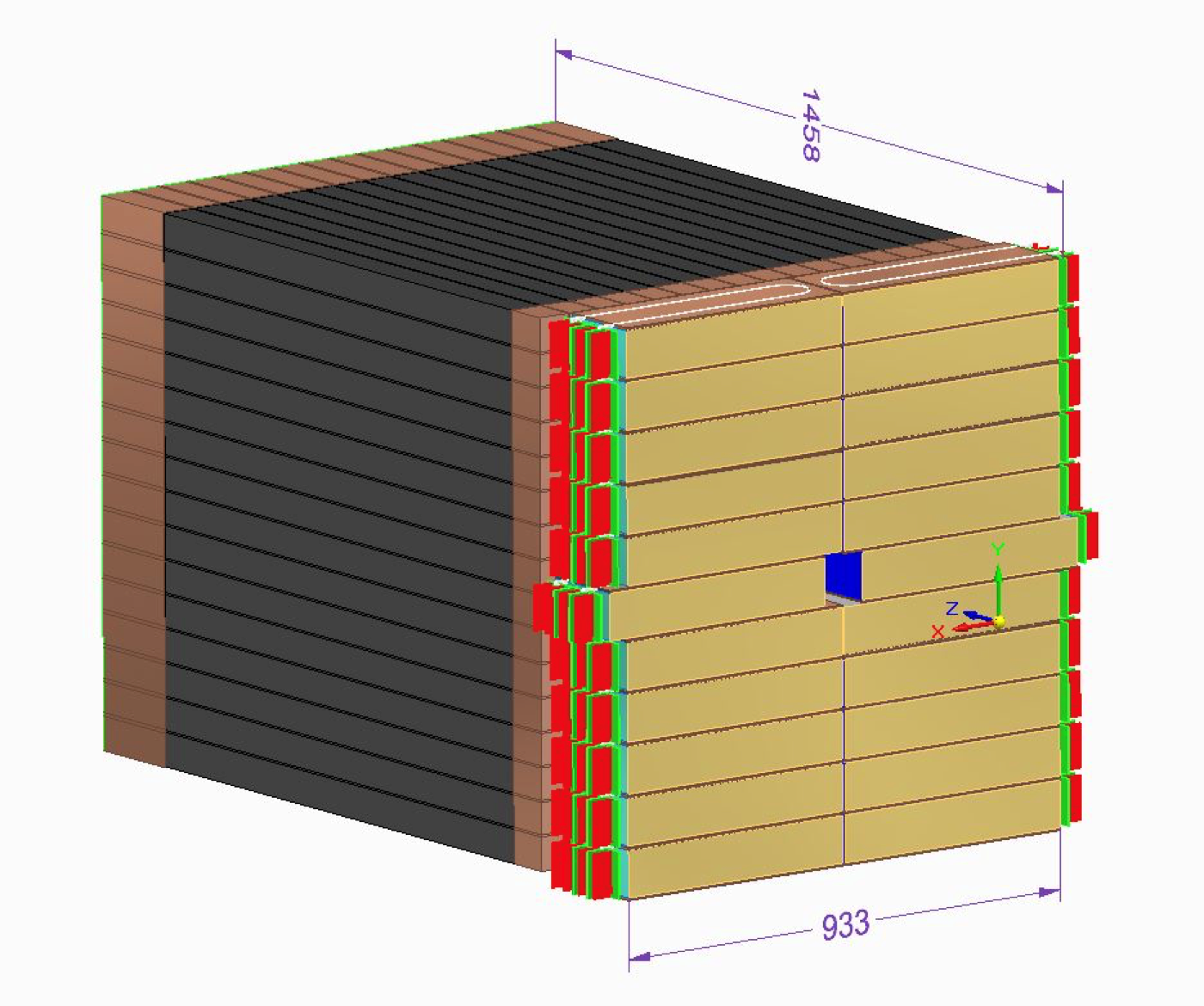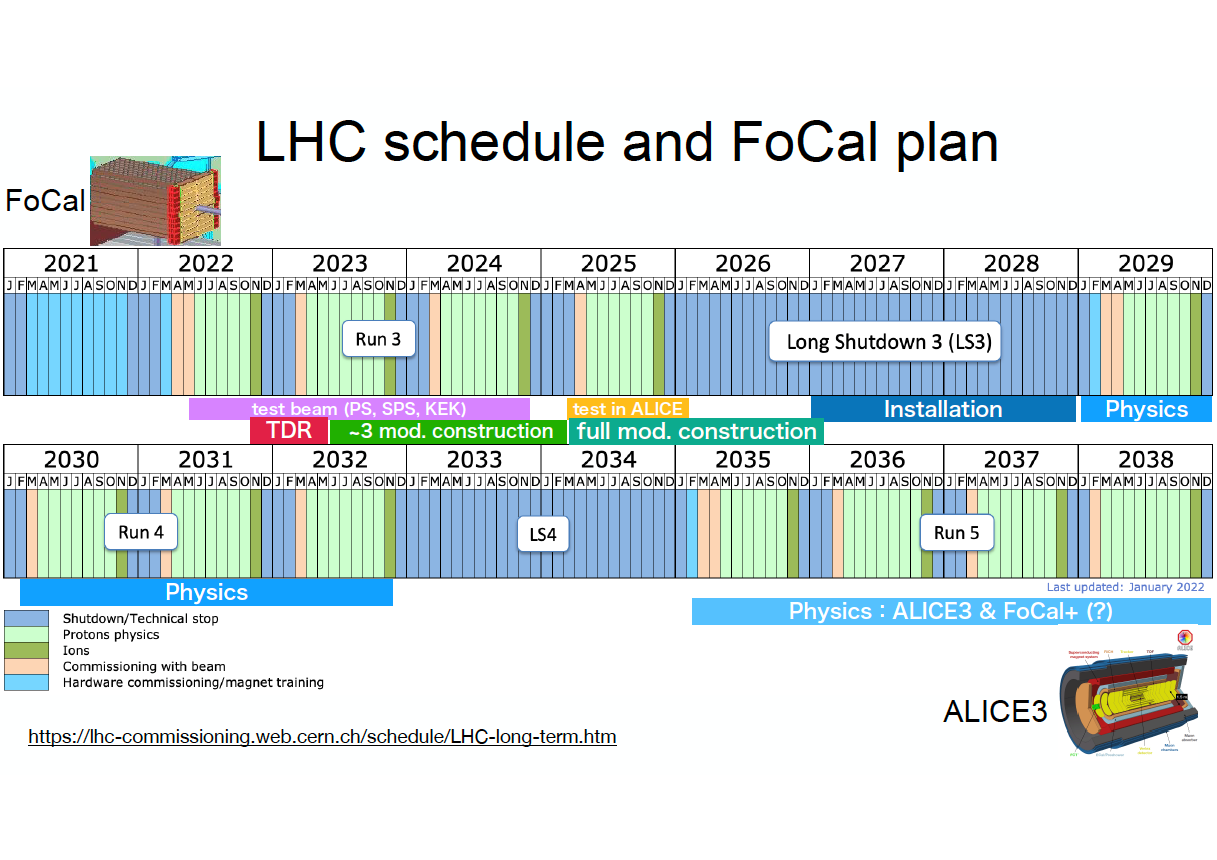Phase 2 (2022-2026)
UT-UU research unit continues to lead the ALICE FoCal project.
With the official approval of the FoCal project, our UT-UU research unit has led to multiple leaders leading the FoCal project, and has developed into a large-scale international project led by the University of Tsukuba and Utrecht University. To realize FoCal, we will: 1) complete the final R&D, 2) formulate a technical proposal (TDR), 3) obtain large-scale external funding for construction (e.g., Grants-in-Aid for Scientific Research, Specially Promoted Research), and 4) FoCal construction and physics derivation are planned. By conducting above 1)-4), it is highly expected that UT-UU research unit will become a world-class education and research center.


Plan (FY2022 – 2026)
- FY2022: Construct the final prototype of FoCal-E PAD and conduct performance evaluation experiments using test beams from the accelerators at CERN. In Japan, he will perform readout tests and radiation tolerance tests on FoCal-E pad detector using the newly built beamline at KEK, ELPH at Tohoku Univ. and RANS (RIKEN Accelerator-driven compact neutron sources) at RIKEN. The obtained results will be summarized in a technical proposal (TDR) and publications and submitted to the LHCC International Committee. An approval of the TDR is a very important step as it will proceed with the construction of FoCal. We will also apply for a large-scale scientific research grants for the FoCal construction.
- FY2023: Continue to work on final R&D, preparation and submission of TDR.
- FY2024: Start construction of FoCal. At the same time, performance evaluation of the FoCal-E module itself will be conducted at the University of Tsukuba and KEK. Construction of mini-FoCal (4th prototype, final).
- FY2025: Continue construction of FoCal. Measurements by using mini-FoCal-E in ALICE.
- FY2026: Install FoCal in ALICE.
Expected results
- With FoCal, the following results are expected.
(1) World’s first observation of “Colored Glass Condensate (CGC)”
(2) World’s most accurate measurement of gluon distribution in nucleus in the small x region for the first time
(3) Elucidation of the production origin and rapid thermalization mechanism of quark-gluon plasma (QGP)
These are among the most important physics questions directly related to the properties of quantum chromodynamics, the origin of mass, and the early universe. FoCal will clarify those important and fundamental questions.
In addition, by promoting these studies, we also expect:
- A world-class education and research center for QGP physics.
- Training doctoral and young researchers who can play an active role in an international scientific community, promote double degree programs, and implement education and research programs based on the University of Utrecht, the University of Grenoble, and the CERN Institute.
- Application of FoCal technology to other experiments (e.g. detector at EIC (USA), J-PARC (Japan)).
- Application of FoCal technology to medical care (e.g. proton-CT)
Outlook
- UT-UU: Developing as a research and education hub for FoCal
- Collaboration with CERN: FoCal laboratory at CERN (2022-)
- Collaboration with RIKEN: Use of small neutron source, radiation tolerance (RANS) (2022-)
- Collaboration with LPSC Grenoble: Double degree Program (2 completed, 2 currently enrolled), initiate a double degree program in Physics for master course (2022-)
- Collaboration with KEK: detector platform, new test beamline (2022-)
